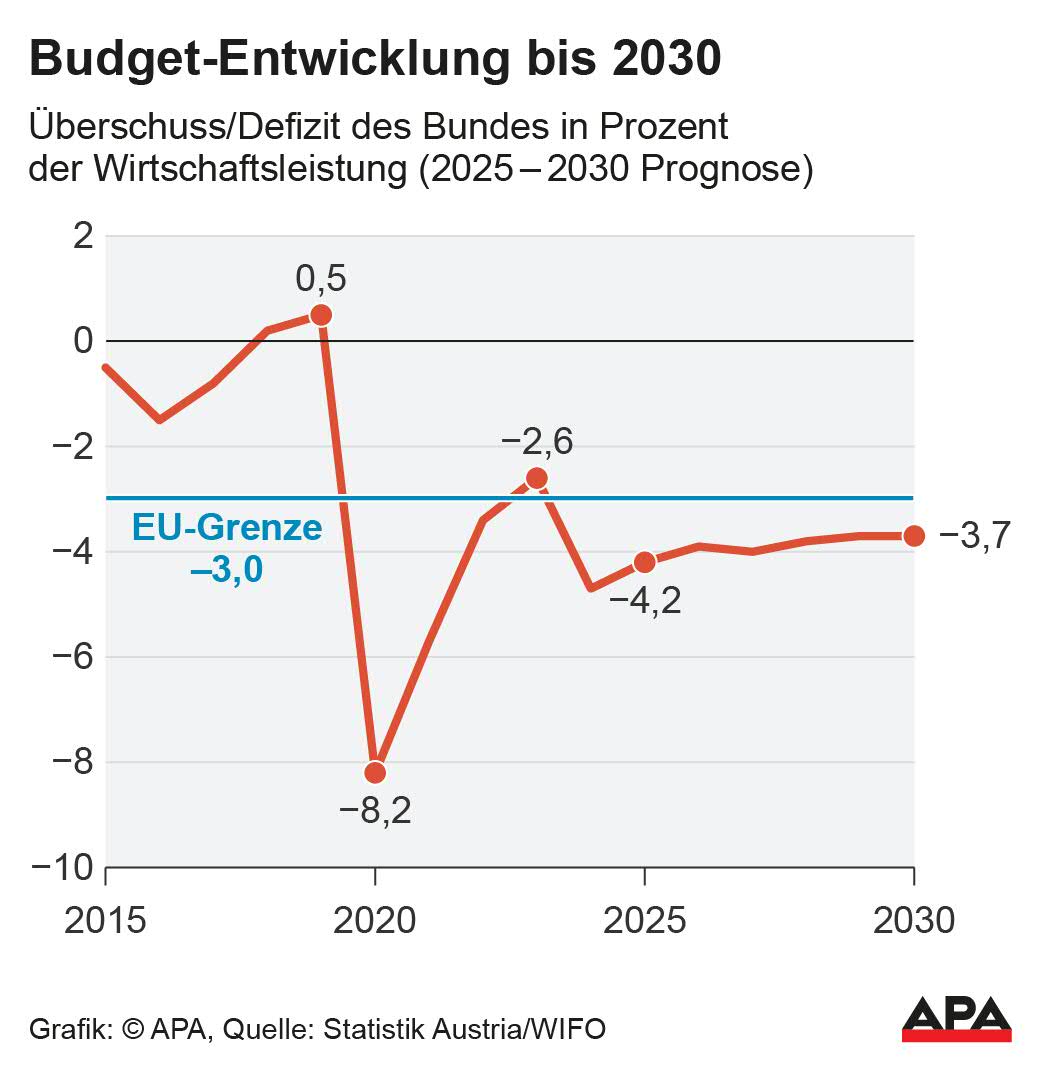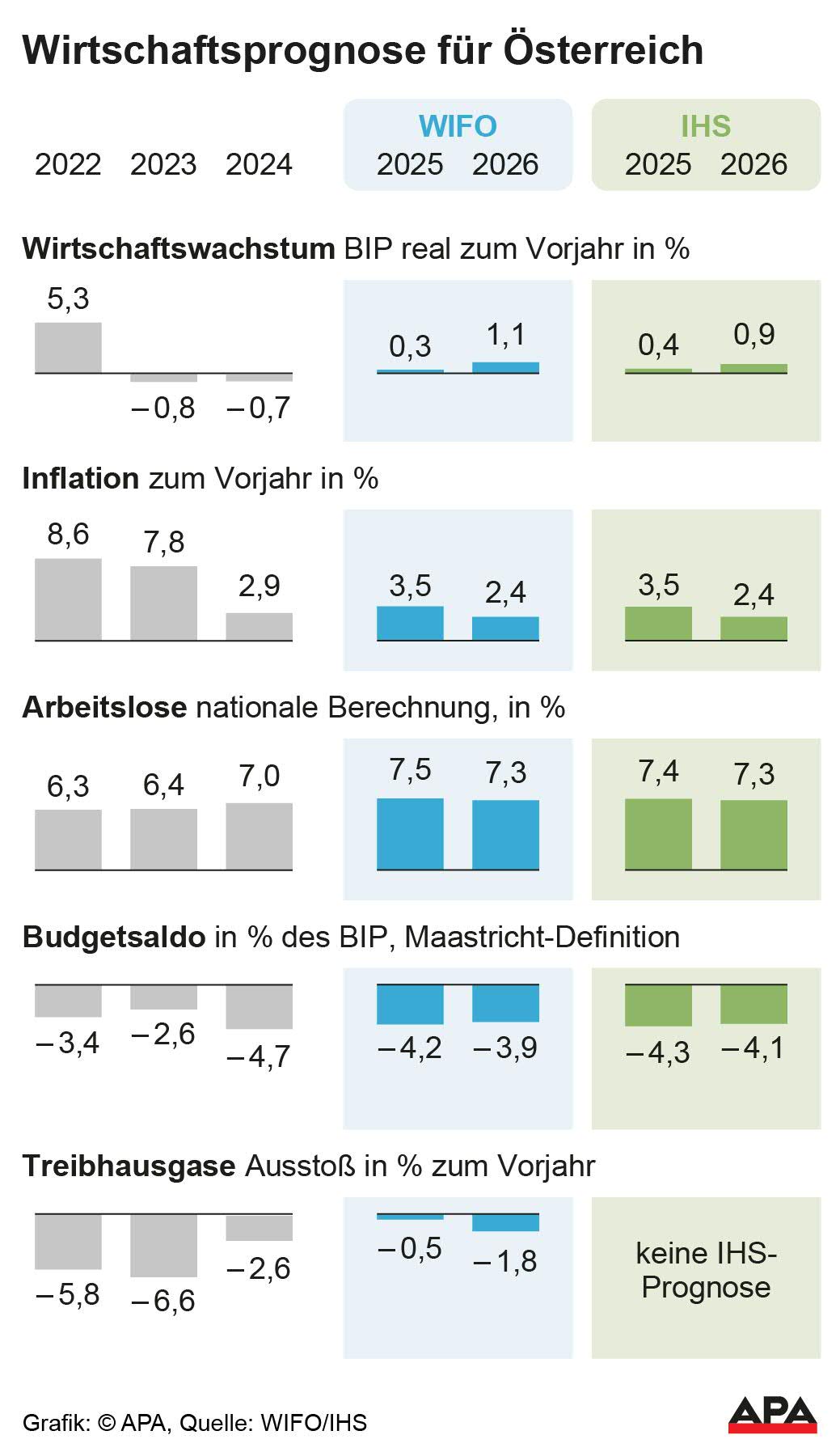Austria Overcomes Recession, But Inflation Remains High

The economic researchers from Wifo and IHS are raising their economic forecast for the current year. However, the economists do not expect a major economic upswing. In June, Austria's economy was still expected to have zero growth (Wifo) or a "mini" plus (IHS) of 0.1 percent, but now a plus of 0.3 or 0.4 percent is expected. The longest economic downturn of the Second Republic would thus be history. However, the economists are significantly raising the inflation forecast.
"No Reason for All-Clear"
"A real upswing is not in sight," commented Wifo Director Gabriel Felbermayr on the current economic forecast at a press conference in Vienna on Tuesday. The 2020s threaten "to become a lost decade," warned Felbermayr. It is "time for a broad reform partnership" between businesses, unions, and politics.
IHS head Holger Bonin also sees "no reason for all-clear" for Austria's economy. The growth rate is slower than in many other EU countries. "The pressure for reform remains high," said Bonin at the press event with Wifo. One must especially "get the inflation problem under control. "For this, various actors must go beyond their limits."
Consumption as a Driving Force
The economic recovery will be supported by private consumption, but foreign trade in goods is still declining this year, explained Wifo in the economic forecast. The economic dynamics are expected to "significantly lag behind previous recovery phases" in 2025/2026, according to IHS, citing "the subdued international economy and domestic structural problems." For 2026, the economists lowered their economic growth forecast from June by 0.1 percentage points to 1.1 or 0.9 percent. In 2023, the real gross domestic product (GDP) in Austria shrank by 0.8 percent and by 0.7 percent in 2024.

Inflation of 3.5 Percent Expected This Year
After the record inflation years of 2022 and 2023 with 8.6 percent and 7.8 percent, inflation fell to 2.9 percent in 2024. However, the sideways movement in inflation expected by Wifo and IHS has not occurred this year, with both institutes now expecting 3.5 percent for the current year. In recent months, food prices have "increased significantly" and contrary to expectations, the price pressure on labor-intensive services has not eased, according to IHS. Next year, Wifo and IHS forecast a decline in inflation to 2.4 percent.

The economic recovery is reaching the labor market with a delay: For this year, economists expected an increase in the unemployment rate by national calculation by 0.5 or 0.4 percentage points to 7.5 (Wifo) or 7.4 percent (IHS). Next year, the unemployment rate is expected to fall to 7.3 percent.
The budget situation of the public sector remains tense. Wifo and IHS forecast a general government deficit of 4.2 and 4.3 percent of economic output for this year, and 3.9 and 4.1 percent for the coming year. The general government deficit in Austria was 4.7 percent of the gross domestic product (GDP) in 2024, significantly above the Maastricht threshold of 3 percent. In July, the opening of an EU deficit procedure against Austria was officially decided.
Growth Below Eurozone Level
Wifo published the short-term economic forecast and, for the first time simultaneously, the medium-term forecast. The real GDP growth from 2026 to 2030 is expected to average 1.1 percent per year. According to Wifo, the Austrian economy is likely to grow 0.2 percentage points weaker in the medium term than the average of the Eurozone.
Wifo/IHS Slightly More Optimistic Than Marterbauer on Budget Deficit 2025
Wifo and IHS also forecast a general government deficit of 4.2 and 4.3 percent of economic output for this year, and 3.9 and 4.1 percent for the coming year. Finance Minister Markus Marterbauer (SPÖ) is somewhat more pessimistic and reported an expected budget deficit of 4.54 percent for 2025 to the EU last week.
The general government deficit in Austria was 4.7 percent of the gross domestic product (GDP) in 2024, significantly above the Maastricht threshold of 3 percent. In July, the opening of an EU deficit procedure against Austria was officially decided.
"Considerable Uncertainties" in Budget of States and Municipalities
The forecast of budget development at the level of states and municipalities is "associated with considerable uncertainties," warned the IHS in its economic report. Approved austerity measures would relieve the budgets from the second half of 2025. Wifo expects expenditure-side savings of the public sector of nearly 3.5 billion euros in 2025, including the elimination of the climate bonus and the suspension of educational leave.
In Wifo's long-term forecast, the combined deficit of the federal, state, municipal, and social security institutions will only slowly decrease to 3.7 percent by 2030. The state's budget deficit is expected to average 3.8 percent of nominal GDP from 2026 to 2030, and the national debt is expected to rise to 88.3 percent of nominal economic output by 2030. Austria would thus violate the EU's Maastricht debt rules by the end of the decade.
(APA/Red)
This article has been automatically translated, read the original article here.
Du hast einen Hinweis für uns? Oder einen Insider-Tipp, was bei dir in der Gegend gerade passiert? Dann melde dich bei uns, damit wir darüber berichten können.
Wir gehen allen Hinweisen nach, die wir erhalten. Und damit wir schon einen Vorgeschmack und einen guten Überblick bekommen, freuen wir uns über Fotos, Videos oder Texte. Einfach das Formular unten ausfüllen und schon landet dein Tipp bei uns in der Redaktion.
Alternativ kannst du uns direkt über WhatsApp kontaktieren: Zum WhatsApp Chat
Herzlichen Dank für deine Zusendung.








